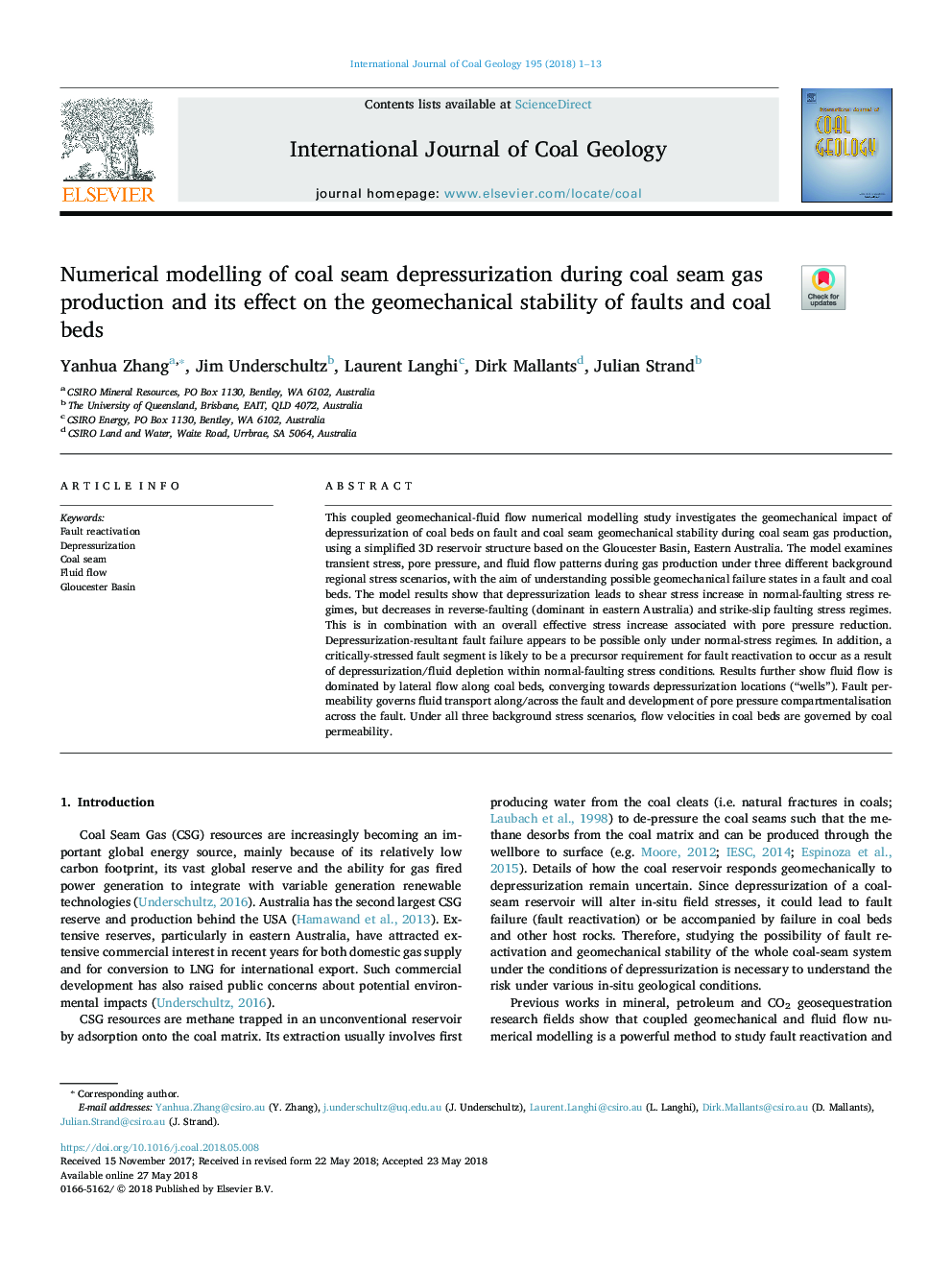| Article ID | Journal | Published Year | Pages | File Type |
|---|---|---|---|---|
| 8123295 | International Journal of Coal Geology | 2018 | 13 Pages |
Abstract
This coupled geomechanical-fluid flow numerical modelling study investigates the geomechanical impact of depressurization of coal beds on fault and coal seam geomechanical stability during coal seam gas production, using a simplified 3D reservoir structure based on the Gloucester Basin, Eastern Australia. The model examines transient stress, pore pressure, and fluid flow patterns during gas production under three different background regional stress scenarios, with the aim of understanding possible geomechanical failure states in a fault and coal beds. The model results show that depressurization leads to shear stress increase in normal-faulting stress regimes, but decreases in reverse-faulting (dominant in eastern Australia) and strike-slip faulting stress regimes. This is in combination with an overall effective stress increase associated with pore pressure reduction. Depressurization-resultant fault failure appears to be possible only under normal-stress regimes. In addition, a critically-stressed fault segment is likely to be a precursor requirement for fault reactivation to occur as a result of depressurization/fluid depletion within normal-faulting stress conditions. Results further show fluid flow is dominated by lateral flow along coal beds, converging towards depressurization locations (“wells”). Fault permeability governs fluid transport along/across the fault and development of pore pressure compartmentalisation across the fault. Under all three background stress scenarios, flow velocities in coal beds are governed by coal permeability.
Related Topics
Physical Sciences and Engineering
Earth and Planetary Sciences
Economic Geology
Authors
Yanhua Zhang, Jim Underschultz, Laurent Langhi, Dirk Mallants, Julian Strand,
